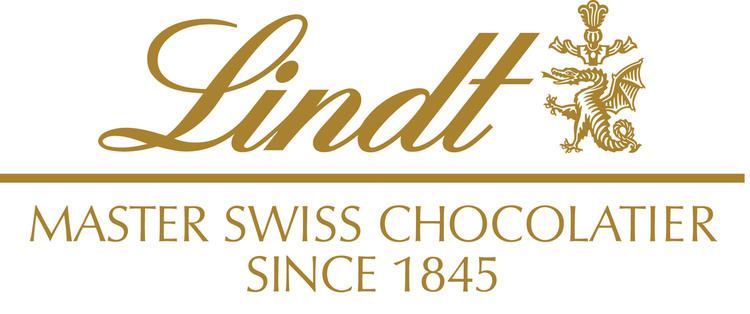Type Aktiengesellschaft Industry Confectionery Founded 1845, Zürich, Switzerland | Traded as SIX: LISN
SIX: LISP Customer service 00 41 44 716 23 98 | |
 | ||
Key people Ernst Tanner (Chairman)
Dieter Weisskopf (CEO) Products Chocolate, confectionery, ice cream Revenue 3.65 billion CHF (2015) Headquarters Kilchberg, Zürich, Switzerland CEO Dieter Weisskopf (1 Oct 2016–) Founders Rudolf Sprüngli-Ammann, David Sprüngli-Schwarz Profiles | ||
Lindt & Sprüngli AG, more commonly known as Lindt, is a Swiss chocolatier and confectionery company founded in 1845 and known for their chocolate truffles and chocolate bars, among other sweets.
Contents
Founding and early years
The origins of the company date back to 1836, when David Sprüngli-Schwarz and his son Rudolf Sprüngli-Ammann bought a small confectionery shop in the old town of Zürich, producing chocolates under the name David Sprüngli & Son. Two years later, a small factory was added that produced chocolate in solid form. In 1845 they moved to the Paradeplatz.
With the retirement of Rudolf Sprüngli-Ammann in 1892, the business was divided between his two sons. The younger brother David Robert received two confectionery stores that became known under the name Confiserie Sprüngli. The elder brother Johann Rudolf received the chocolate factory. To raise the necessary finance for his expansion plans, Johann Rudolf converted in 1899 his private company into "Chocolat Sprüngli AG". In that same year, he acquired the chocolate factory of Rodolphe Lindt in Bern and the company changed its name to Aktiengesellschaft Vereinigte Berner und Züricher Chocoladefabriken Lindt & Sprüngli (United Bern and Zurich Lindt & Sprungli Chocolate Factory Ltd.).
Expansion
In 1994, Lindt & Sprüngli acquired the Austrian chocolatier, Hofbauer Österreich, and integrated it, along with its Küfferle brand, into the company. In 1997 and 1998, respectively, the company acquired the Italian chocolatier Caffarel and the American chocolatier Ghirardelli and integrated both of them into the company as wholly owned subsidiaries. Since then, Lindt & Sprüngli has expanded the once-regional Ghirardelli to the international market.
On 17 March 2009 Lindt announced the closure of 50 of its 80 retail boutiques in the United States because of weaker demand in the wake of the late-2000s recession.
Recent developments
After Lindt recorded net profits of 4.7 million in the 2011 calendar year,the marketing team stated that its market share amounted to 29%, surpassing its previous years. On 14 July 2014, Lindt bought Russell Stover Candies, maker of Whitman's Chocolate, for about $1.5 billion, the company's largest acquisition to date.
Factories
Lindt & Sprüngli has six factories in the following locations: Kilchberg, Switzerland; Aachen, Germany; Oloron-Sainte-Marie, France; Induno Olona, Italy; Gloggnitz, Austria; and Stratham, New Hampshire in the United States. The factory in Gloggnitz, Austria manufactures products under the Hofbauer and Küfferle brand in addition to the Lindt brand. Caffarel's factory is located in Luserna San Giovanni, Italy and Ghirardelli's factory is located in San Leandro, California in the United States.
Lindt Chocolate Cafés
Lindt has opened eight chocolate cafés in Australia, four in Sydney and four in Melbourne. The café’s menu offers breakfast and lunch, but mostly focuses on chocolate and desserts. They also sell handmade chocolates, macaroons, cakes, and ice cream.
Lindor
Originally Lindor was a truffle ball that Lindt & Sprüngli introduced in 1949. Lindor is a type of chocolate produced by Lindt, which is now characterized by a hard chocolate shell and a smooth chocolate filling. It comes in both a ball and a bar variety as well as in a variety of flavours. Each flavour listed below has its own wrapper colour:
Most of the US Lindor truffles are manufactured in Stratham, New Hampshire.
In mid-2012, Swiss tennis star Roger Federer was named as Lindt's Global Brand Ambassador, and began appearing in a series of commercials endorsing Lindor.
Seasonal confectioneries
Lindt also produces the Gold Bunny, a hollow milk chocolate rabbit in a variety of sizes available every Easter since 1952. Each bunny wears a small coloured ribbon bow around its neck identifying the type of chocolate contained within. The milk chocolate bunny wears a red ribbon, the dark chocolate bunny wears a dark brown ribbon, the hazlenut bunny wears a green ribbon and the white chocolate bunny wears a white ribbon. Additionally, each chocolate is wrapped to look like a carrot, a chick, or a lamb. The lambs are packaged with four white lambs and one black lamb.
During the Christmas season, Lindt produces a variety of items including, but not limited to, chocolate reindeers (which somewhat resemble the classic bunny), 'Santa', 'Snowmen' figures of various sizes, bears, bells, advent calendars, and chocolate ornaments. Various tins and boxes are available in the Lindt stores, the most popular colour schemes being the red and blue. Other seasonal items include Lindt chocolate novelty Golf balls.
For Valentine's Day, Lindt sells a boxed version of the Gold Bunny, which comes as a set of two kissing bunnies. Other Valentine's Day seasonal items include a selection of heart shaped boxes of Lindor chocolate truffles.
Chocolate bars
Lindt sells a variety of chocolate bars. Flavours from the Excellence range include:
Petits desserts
Lindt's "Petits Desserts" range embodies famous European desserts in a small cube of chocolate. Flavours include: Tarte au Chocolat, Crème Brulée, Tiramisu, Creme Caramel, Tarte Citron, Meringue, and Noir Orange.
Lindt makes a "Creation" range of chocolate-filled cubes: Milk Mousse, Dark Milk Mousse, White Milk Mousse, Chocolate Mousse, Orange Mousse and Cherry/Chili.
Liqueurs
Bâtons Kirsch are Lindt Kirsch liqueur-filled, chocolate-enclosed tubes dusted in cocoa powder.
Ice cream
In Australia, Lindt manufactures ice cream in various flavours:
